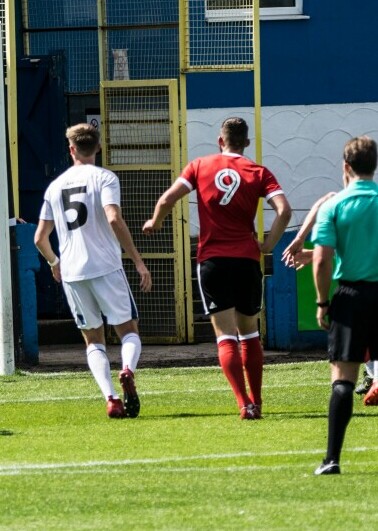
Striker positioning isn’t just about being in the right place at the right time. It’s about understanding the game’s flow and knowing how to create opportunities for both yourself and your teammates. For any aspiring striker, nailing this skill can transform your play from average to exceptional.
In modern football, the role of a striker has evolved. Gone are the days when strikers were just goal poachers waiting in the box. Today, a striker’s positioning can dictate how the entire team plays. Think of it as the pulse of your squad’s offensive tactics. You’re not just finishing plays; you’re also starting them and everything in between.
Positioning plays a crucial role for a striker. By being aware of space and movement, you can break down even the toughest defenses. A well-positioned striker makes defenders constantly second-guess, opening up the field for more scoring opportunities.
The evolution of striker positioning can be traced back to football legends who redefined the role. Players like Johan Cruyff and Thierry Henry showed that movement and intelligence off the ball are just as important as technical skills. Studying these legends can offer insights into how positioning has shaped modern attacking play.
Lyle Foster, with his unique approach to positioning, stands out as a contemporary example. His intuitive understanding of space and timing sets him apart from traditional strikers. Foster’s game isn’t just about scoring; it’s about creating an environment where his team can thrive, often dragging defenses out of shape to manufacture chances.
Mastering Space: Techniques and Strategies
Every great striker knows that the game isn’t just fought with the ball at your feet; it’s won by mastering the art of space. When it comes to exploiting defensive weaknesses, a good striker knows how to spot and attack gaps in the defense. It’s like a game of chess—moving in unexpected ways to outsmart your opponent.
Movement off the ball is another critical skill. A striker who’s constantly in motion is a nightmare for defenders. This isn’t about sprinting aimlessly; it’s about purposeful movement. Think of it as a dance, where every step you take is meant to draw defenders out of position and create scoring opportunities.
Lyle Foster excels in this department. His understanding of spatial awareness allows him to navigate tight defenses and find those sweet spots where he can do the most damage. When you watch Foster play, it’s like he’s a step ahead, always knowing where to be. This knack for positioning doesn’t just happen overnight; it’s a skill honed through countless hours on the training pitch and in live matches.
To see this mastery in action, you only have to look at some of Foster’s key matches. Take his performance against high-profile teams where his ability to read and move into space turned tough games into scoring showcases. Analyze these games and you’ll understand how effective positioning can change the course of a match.
So how can you channel your inner Lyle Foster and improve your own positioning? Start by studying games—both your own and those of top strikers. Pay attention to how they move when they don’t have the ball. Practice drills focused on movement and spatial awareness. The key is to make your positioning second nature so you can strike with precision when the moment arrives.
The Psychological Edge: Mental Aspects of Positioning
In football, physical skills get you on the pitch, but it’s the mental game that truly elevates your play. For a striker, anticipation and decision-making are crucial. It’s about reading the game, almost as if you’re predicting the next move. When you can anticipate defensive actions before they happen, your positioning becomes a lot more effective.
Focus and composure under pressure are other mental assets. High-stakes moments come with the territory when you’re a striker. The ability to remain calm and execute your game plan can make the difference between a game-winning goal or a missed opportunity. A distracted or overly anxious striker easily falls into defensive traps, while a composed player finds ways to exploit them.
Lyle Foster’s mental fortitude is something to marvel at. He’s got this incredible knack for staying cool even when defenders are breathing down his neck. His mindset allows him to make intelligent decisions about where to position himself, ensuring he’s always a threat.
Coaches and teammates often highlight Foster’s mental attributes. They talk about how he sees the game differently, often making moves that others wouldn’t consider. It’s not just about talent; it’s about his mental approach to the game. Foster embraces the challenge of positioning, using his intellect as much as his athleticism.
Here’s some food for thought if you’re looking to boost your mental game. Practice visualization techniques—imagine different game scenarios and how you’d react. Engage in mental exercises that simulate high-pressure situations. Lastly, get feedback from coaches and teammates to understand how you can improve your decision-making and composure. Trust in your ability to read the game, and you’ll find your positioning naturally improving.
Training and Development: Building a Positional Master

Improving positioning skills takes dedicated practice and the right guidance. Drills and exercises targeting spatial awareness and movement can make a world of difference. Simple yet effective routines, like shadow plays and position-specific drills, allow you to fine-tune your sense of space and timing.
Coaching and mentorship play vital roles in this development. A good coach helps you understand not just where to be but why to be there. They offer insights that textbooks and tutorials can’t match because they come from experience. Having a mentor who has played at a high level can provide personal anecdotes and practical tips tailored to your style of play.
Lyle Foster’s journey is a masterclass in how training and mentoring shape a player’s positional sense. His training regimen often includes detailed analysis of past performances, breaking down what worked and what didn’t, allowing him to make adjustments in real-time. Foster also credits his mentors—coaches who’ve guided his understanding of the game and refined his natural instincts.
For those aspiring to become top-tier strikers, learning from Foster’s journey can be incredibly beneficial. Incorporate position-focused drills in your training. Seek out coaches and mentors who can offer personalized advice. Understand that mastering positioning is a continual process of learning and adaptation.
Remember, positioning isn’t just a skill; it’s a mindset. It’s about constantly being aware of the dynamics of the game and being prepared to seize the moment. Embrace this journey with the dedication it deserves, and you’ll find yourself evolving into a more effective and impactful player.
